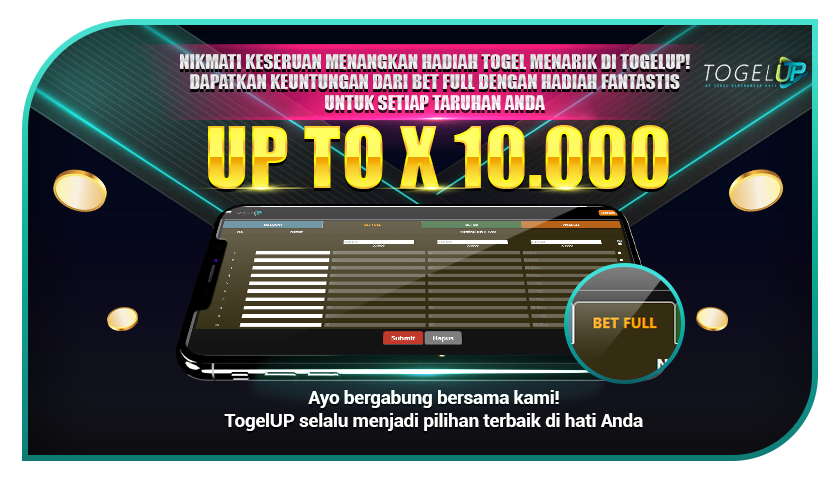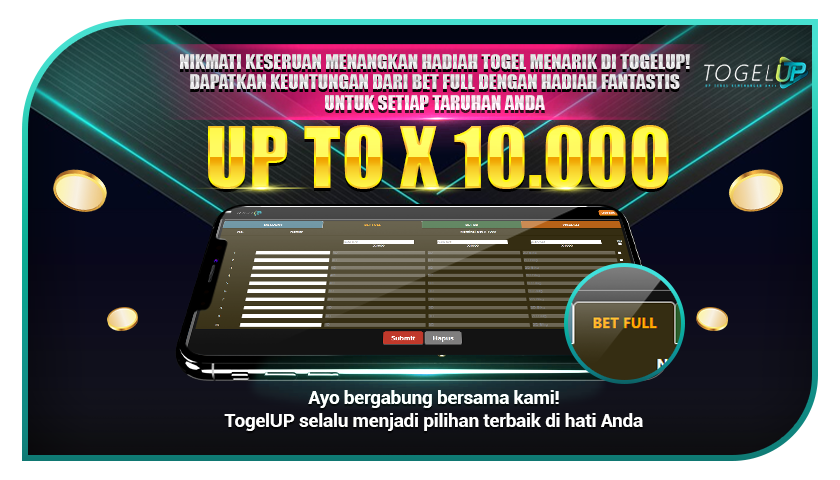Daftar Togelup
Togelup: Link Togel Online Singapore & Situs IDN Toto Login Resmi
Togelup: Link Togel Online Singapore & Situs IDN Toto Login Resmi
Togelup merupakan link togel online yang menyediakan banyak jenis permainan judi online resmi dari IDN Toto. Seperti game togel, slot gacor, arcade, taruhan bola yang bisa dimainkan darimana saja dengan mudah di android atau pc anda. Mempunyai keluaran togel terlengkap mulai dari Singapore, Kamboja, Hongkong, Thailand sehingga memberikan banyak opsi untuk para membernya saat bosan dengan game tersebut.
Togelup juga mempunyai banyak link login alternatif yang dapat anda cari dipencarian google agar tidak tertipu oleh oknum yang mengatasnamakan Togel up. Serta melayani para membernya dengan senang hati selama 24 jam non stop dan selalu mendengarkan keluhan member ketika bingung dengan kendala saat bermain togel online disitus kami. Ayo buruan segera daftar di situs Togelup Resmi untuk menikmati kepuasan bermain judi online disini.
Share



